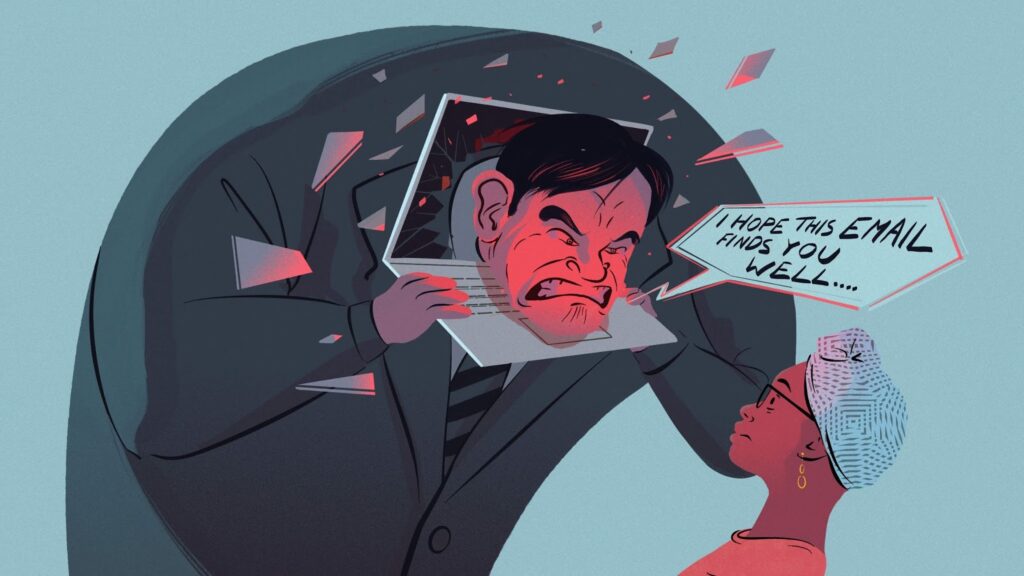You’re a freelancer, making a living doing what you love. You’ve landed a project that seems promising, but the longer it goes on, the more you feel you’re doing extra work. The client is asking for a little more here, a little more there until suddenly you’re not even making a profit on the project. And you don’t want to say ‘no’ because you want to keep the client, and do whatever it takes to keep them happy.
Sound familiar? This is the very definition of scope creep (literally, the slow, almost imperceptible creeping growth of your original project scope). Scope creep costs the average UK freelancer approximately £8,000 per year—though we suspect it’s much higher for newer freelancers. But fear not! By learning to identify the signs, communicate effectively, and establish clear project scopes, you can maintain control, stay profitable, and keep your client relationships positive. Get ready to take charge of your freelance journey and protect what matters most: your sanity and profits.
Note for new freelancers: A scope, or scope of work, is a detailed list of everything that is included in the project. It is what the client approves and agrees to by signature (along with a contract). It should not change once the project begins—read on to find out why.
The True Cost of Scope Creep
While it’s easy to get caught up in the excitement of a new project, it’s crucial for freelancers to understand the true cost of scope creep. Scope creep goes beyond the obvious drain on time and resources, it also has a significant impact on your mental health and (almost more importantly sometimes) your profits.
As freelancers, our time is valuable, and when clients continually add new requirements to a project, it can feel like a never-ending battle to keep up. This constant pressure can lead to increased stress, burnout, and a decline in the quality of your work. Not only does this impact your personal life, but it can also tarnish your professional reputation, making it harder to attract future clients.
Another often overlooked cost of scope creep is the strain it puts on your profitability. As the client’s demands expand, so does the amount of work you’re expected to deliver. Yet, these additional tasks are frequently unpaid. The result? Your profits dwindle as you put in more hours without receiving proper compensation. This can lead to financial instability and frustration, ultimately hindering your ability to grow your business and achieve your long-term goals.
Moreover, scope creep can also impact your ability to take on new projects by eating into your time and resources. As the workload increases due to scope creep, you may find yourself unable to take on new clients or complete other projects. This not only limits your earning potential but also prevents you from diversifying your portfolio and expanding your expertise.
Spotting the Signs of Scope Creep
In order to prevent scope creep, it is crucial to be able to identify the early warning signs. One of the most obvious indicators is when a project starts to grow in complexity or expands beyond the originally agreed-upon scope. This can happen when clients request additional deliverables, features, or changes that were not part of the original scope.
Another common sign of scope creep is when project timelines begin to extend beyond the agreed-upon deadlines. This can occur when clients continuously request revisions or multiple rounds of feedback, resulting in delays that impact not only your schedule but also your ability to take on other projects.
Watch out for any requests that go beyond the initial scope without proper compensation or adjustments to the project budget. For example, if a client asks you to complete additional work that was not part of the original agreement but does not offer any additional compensation, it counts as scope creep.
If you notice that the volume and frequency of client requests are increasing significantly, it could be an indication of scope creep. While it’s important to be responsive and accommodating to client needs, it’s equally important to recognize when requests start to exceed the boundaries of the project’s scope.
Lastly, pay attention to any changes in the level of client involvement. If a client starts to become more hands-on, requesting constant updates or demanding changes that were not initially discussed, it may be a sign that the project is veering off track and expanding beyond the original scope.
Understanding and recognizing these red flags enables you to take proactive steps in managing scope creep and setting boundaries to maintain the integrity of your work. With this awareness, you can now explore effective communication strategies to set clear expectations and avoid scope creep pitfalls altogether.
The key to avoiding scope creep: an air-tight scope & better communication
Effective communication is paramount in preventing scope creep. Scheduling regular check-ins and promptly responding to client inquiries and clarifying any ambiguities will prevent misunderstandings.
This starts at the beginning of the project, before anything has even been agreed. Clearly define what is included in the project scope and assertively communicate any limitations (e.g. what is not included). Using UnderPinned’s Scope of Work, you can clearly outline what you plan to deliver, what it costs, and start from a point of understanding that the client signs and agrees to before any work begins.
You can send it to the potential client directly through the app, and their signature on the scope of work is legally binding. This also gives you a very clear and established document to return to if ever there are doubts as to what will be delivered.
How to Address Scope Creep: A script
Many of us already have the skills to notice when scope creep is happening to us, but may not have the communication tools or confidence to communicate it. It’s important to be confident in discussing additional costs or extended timelines, to ensure your clients understand the impact of expanding the project beyond its original scope.
Here are some phrases you can use in a few different scenarios where scope creep is an issue:
- The client has directly asked for a deliverable that is not included in the initial Scope of Work
We can absolutely add that to the project. It would increase the budget by £550. Would you like me to send an updated scope of work? - You and the client both agree something additional is needed, but it is not in the Scope of Work
It makes sense to add this to the project, but since it wasn’t originally included we will need to look at the budget again or consider replacing something in the scope with this instead. Can we have a quick call to make this decision together? - It doesn’t seem deliberate but the client seems unaware of what is included and what is not.
These are great ideas! However, I do want to keep us on track and refer back to our original scope of work. This is what is included in the project. If there is additional budget, we can absolutely factor in these new ideas. Let me know if you’d like me to provide an updated scope of work to reflect these changes. - The client has directly asked for a deliverable that is not included in the initial Scope of Work
I think we need to have a quick check-in on the scope of this project and where we are headed. Some of these requests are outside of the approved scope, so we’ll need to address this with an updated budget. Let’s discuss which are crucial to the project so that I can properly scope for the additional deliverables.
Another valuable tip is to establish a change request process. This process should outline how clients can request changes to the project scope and how those changes will be assessed and approved. Implementing this procedure allows you to maintain control over your workload and ensures that any changes are properly evaluated before being incorporated into the project.
You should also track your time and expenses religiously. Yes, I know the idea of punching a clock is exactly the opposite of how you imagined your freelance life going, but the only way to know if your projects are profitable, if your rates are accurate and if you have sufficient resources is to understand what it takes for you to deliver everything you’ve sold your clients. Use time tracking to monitor the progress of your projects and ensure that you are adequately compensated for your work. By keeping a close eye on your time and expenses, you can identify any instances of scope creep early on and address them quickly. This data can also help you make informed decisions about pricing and project estimates in the future, further safeguarding your profits.
There will always be clients and situations that you feel warrant going the extra mile and delivering a little more than what was agreed upon. This should always be at your discretion and should be something you remain in control of. Remember, when it comes to scope creep, not only is your mental well-being on the line, but your financial stability too. Embrace these strategies, stay focused, profitable, and in control. As Winston Churchill once said, “Plans are of little importance, but planning is essential.” So plan, prepare, and protect yourself from the perils of scope creep.




